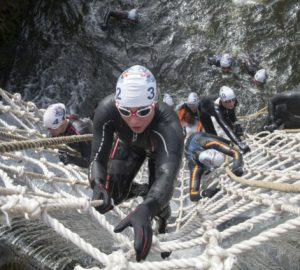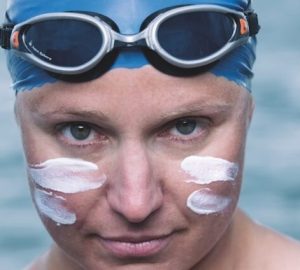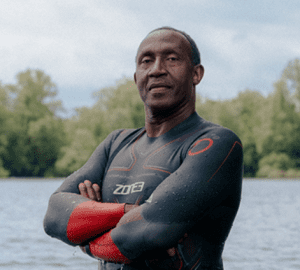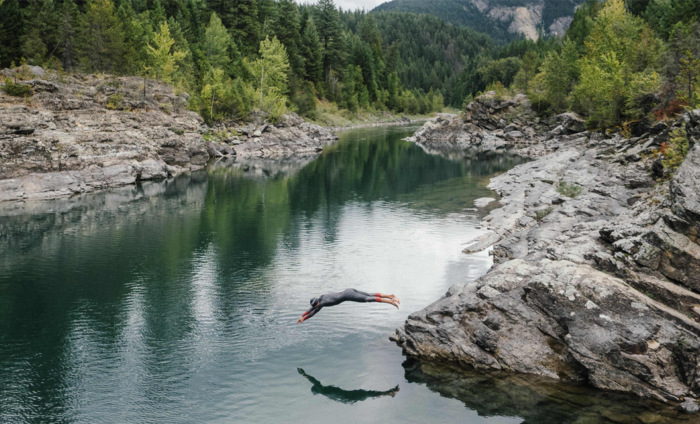
How is open water swimming different to the pool?
Understanding what you are getting into will give a big boost to your confidence levels and help keep you safe
Even if you’ve never swum in open water, you can probably still imagine how it will be different to your local pool, but let’s take a moment to look at some of those differences in more detail.
Water temperature
Most indoor pools in the UK are maintained at somewhere between 26 and 31 degrees Celsius. Outside can range from 0 (or even slightly below in the sea) to close to boiling point in some hot springs. In the summer, rivers, lakes and the sea around the UK will range from low double digits to, very occasionally, something like 25 degrees. This means that even at its very warmest, open water in the UK is cooler than a swimming pool.
Now, even if your local swimming pool is heated to 29 degrees, it can still feel chilly when you first jump in, so getting in to water that’s 10 to 15 degrees cooler has got to be a lot worse, right? Well, yes and no. We’ll take a quick look at the three main risks of swimming in cold water later, but for now we’ll just say that for many people, cold is not as big a barrier as they think it is, and cool water on your skin feels amazing. Learn to embrace it.

Water clarity
If your swimming pool water is cloudy, it probably means something has gone wrong. Outside, your visibility in the water can be close to zero or, if you’re swimming somewhere special, better than in the pool. Low visibility in the water does not necessarily mean poor quality or unsuitability for swimming. Rivers in particular can have low visibility as moving water may carry a high silt load. Shallow, manmade, muddy bottomed lakes may also have poor visibility because of churned up mud, sometimes due to bottom feeding fish. Even when the clarity is good, you often still can’t see the bottom, so it seems as if visibility is poor.
Low visibility in the water can be disorientating if you’re not used to it or prepared for it. Remember, you don’t need to be able to see underwater to be able to swim
Water quality
Open water is natural. That means it has things in it: fish, plants, insects, floating debris, rubbish, bacteria, algae etc. Many of those things will do you no harm but there are a few things to steer clear from. Avoid water that could be contaminated by sewage, is stagnant, full of rubbish or covered with poisonous blue-green algae. On the other hand, healthy water should have plants and fish and their presence is a good sign. If you can’t find water quality information, then relying on your senses and common sense will take you a long way. Swimming pools are dosed with chemicals and full of sweat and urine. Your local river might seem more enticing once you think about that.
Walls and floors
In the pool, water depth is regular. Most pools have signage to indicate the water depth and to distinguish the shallow and deep ends. No such regularity exists outdoors. You occasionally see signs warning you of deep water, but for swimmers shallow water is often more of a problem. Always take care when swimming outside and avoid jumping or diving in unless you are 100 per cent certain the water is deep enough to do so and there are no other obstacles. Once you are out of your depth, it really doesn’t matter how deep the water is; it doesn’t affect your swimming. However, psychologically, swimming in very deep water can be a bit disturbing and takes a bit of getting used to. Remember too that you are not surrounded by walls that you can reach within a few strokes and hang on to. This is one of the things that gives you that great sense of freedom when you swim outside but you need to manage the associated risks that come with it.
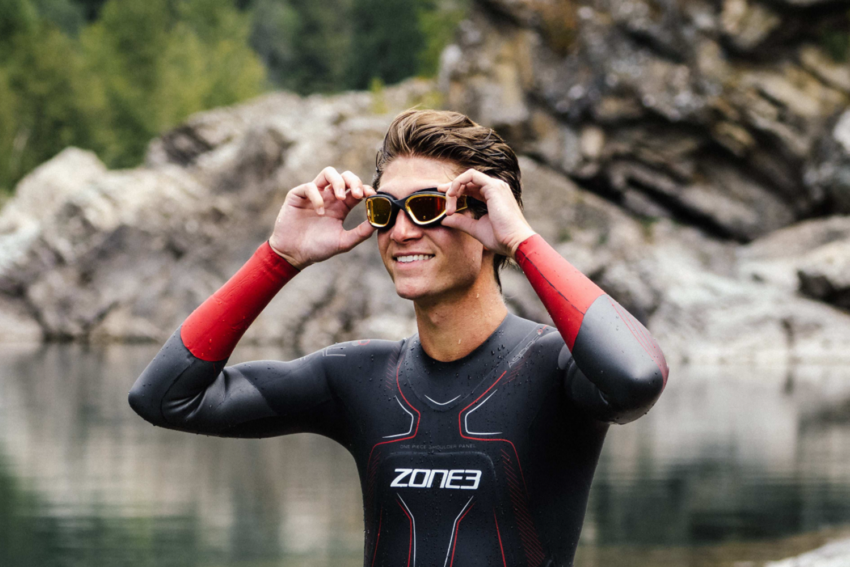
Water movement
Unless you’re in one of those strange pools with flumes and whirlpools, the water in pools doesn’t move significantly, and certainly not in any dangerous way. Conversely, open water can move faster than anyone can swim. In order to stay safe, you need to know what’s happening in any body of water you swim in.
Take rivers first. It is often obvious if the water is flowing fast but it can still be difficult to gauge exactly how fast and what the implications are for swimming. With proper planning you can swim safely in fast flowing rivers, but this is best left to experienced swimmers. For people new to outdoor swimming, it’s best to stick to slow flowing rivers (where the flow is less than your swimming speed) and always start by swimming upstream if you plan to get out at the same place you got in. Otherwise plan a one-way swim but ensure you are completely confident in your exit point and how you will spot it from the water. Note that the flow in some rivers can change very rapidly after heavy rain or if they are controlled by dams.
Water flows in lakes are generally benign, but look out for in-flowing rivers and outflows.
The sea is totally different and must be treated with the utmost respect. Speaking to an experienced swimmer with local knowledge is highly recommended before swimming anywhere except a lifeguarded beach. You can have both lateral movement along the shore or rip currents that can pull you away from shore. Around the UK, we have big tidal ranges which means that somewhere with easy access to the water may be submerged or out of reach a few hours later.
Waves, swell and chop
Except for rare calm days, the water surface of rivers, lakes and oceans is rarely flat. If you want to swim outside, you should expect to occasionally be smacked in the face by a passing wave. Swimming in rough water can be challenging and fun, but it’s also more difficult than swimming in the calm conditions of an indoor pool. You’re more likely to experience rough conditions in the ocean, but you can get surprisingly big waves in lakes. You will get tired more quickly when swimming in rough water, you will find it more difficult to see where you are going and safety personal will find it more difficult to see you. As you get more experienced, you will become more confident in rough conditions, but always stay well within your capabilities.
Rain, wind and weather
You’re outside. You need to deal with the elements. Swimming in the rain isn’t usually a problem. You’re wet anyway. Just ensure you’ve stored your clothes somewhere dry for afterwards. However, be aware that heavy rainfall can result in pollution due to overflowing drains or surface water run-off. Wind creates waves, which we’ve already mentioned, but in addition can make things unpleasant for safety kayakers and support crew. Certain combinations of wind and currents can create very mixed and choppy conditions that are particularly difficult for swimming. That said, while you may picture your ideal swim as being in calm conditions under blue skies, your most memorable and exhilarating swimming experiences will take place when the weather is wild. However, if there is a risk of lightning, leave the water immediately.
Sun
Swimming outdoors with the sun on your back ranks as one of life’s most pleasant experiences, but do remember the sun can still burn you while you’re in the water. Outdoor swimmers often end up with intriguing tan lines. Use a good, waterproof sunscreen.






